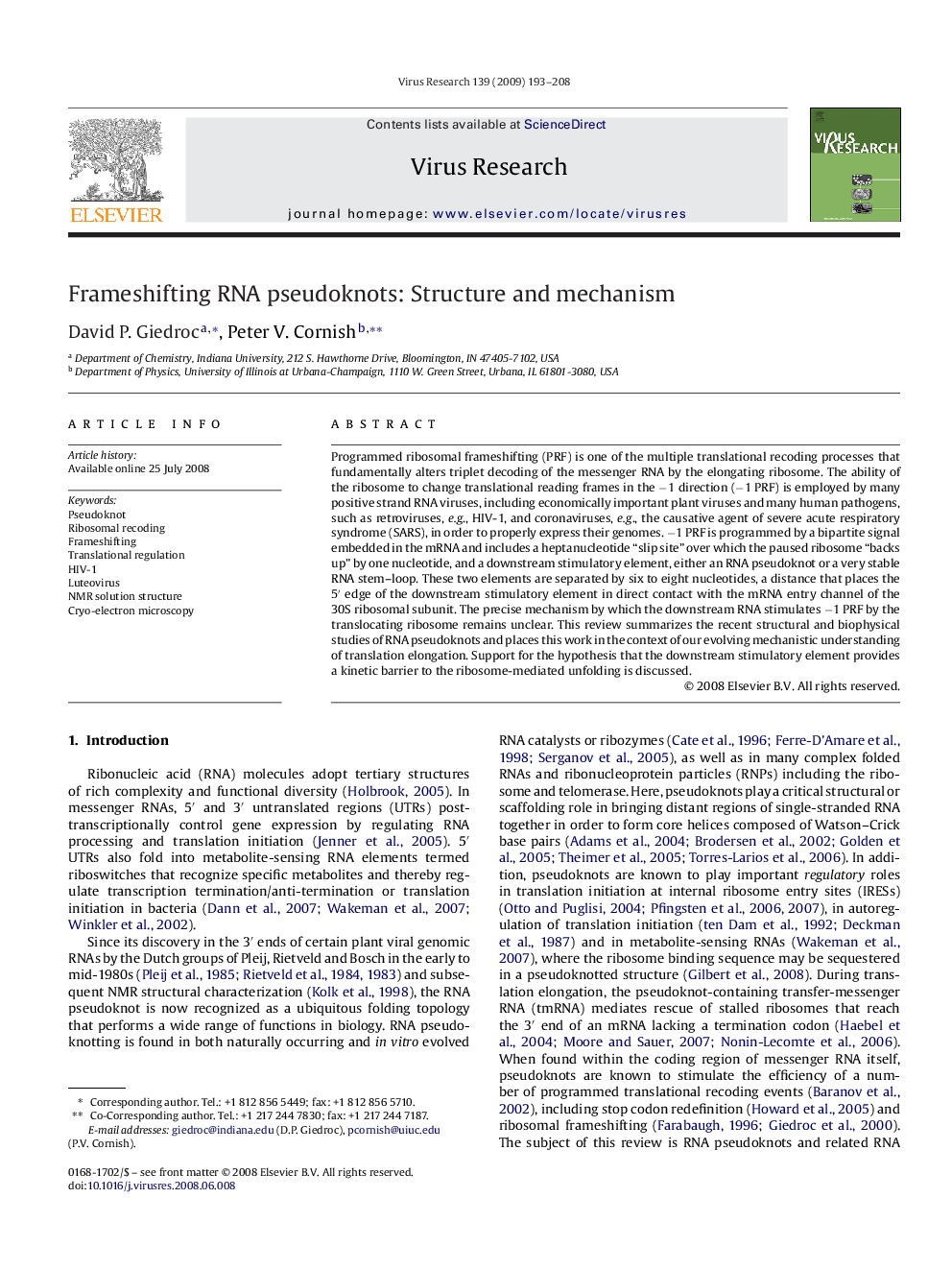| کد مقاله | کد نشریه | سال انتشار | مقاله انگلیسی | نسخه تمام متن |
|---|---|---|---|---|
| 6143569 | 1228264 | 2009 | 16 صفحه PDF | دانلود رایگان |
عنوان انگلیسی مقاله ISI
Frameshifting RNA pseudoknots: Structure and mechanism
دانلود مقاله + سفارش ترجمه
دانلود مقاله ISI انگلیسی
رایگان برای ایرانیان
کلمات کلیدی
موضوعات مرتبط
علوم زیستی و بیوفناوری
ایمنی شناسی و میکروب شناسی
ویروس شناسی
پیش نمایش صفحه اول مقاله

چکیده انگلیسی
Programmed ribosomal frameshifting (PRF) is one of the multiple translational recoding processes that fundamentally alters triplet decoding of the messenger RNA by the elongating ribosome. The ability of the ribosome to change translational reading frames in the â1 direction (â1 PRF) is employed by many positive strand RNA viruses, including economically important plant viruses and many human pathogens, such as retroviruses, e.g., HIV-1, and coronaviruses, e.g., the causative agent of severe acute respiratory syndrome (SARS), in order to properly express their genomes. â1 PRF is programmed by a bipartite signal embedded in the mRNA and includes a heptanucleotide “slip site” over which the paused ribosome “backs up” by one nucleotide, and a downstream stimulatory element, either an RNA pseudoknot or a very stable RNA stem-loop. These two elements are separated by six to eight nucleotides, a distance that places the 5â² edge of the downstream stimulatory element in direct contact with the mRNA entry channel of the 30S ribosomal subunit. The precise mechanism by which the downstream RNA stimulates â1 PRF by the translocating ribosome remains unclear. This review summarizes the recent structural and biophysical studies of RNA pseudoknots and places this work in the context of our evolving mechanistic understanding of translation elongation. Support for the hypothesis that the downstream stimulatory element provides a kinetic barrier to the ribosome-mediated unfolding is discussed.
ناشر
Database: Elsevier - ScienceDirect (ساینس دایرکت)
Journal: Virus Research - Volume 139, Issue 2, February 2009, Pages 193-208
Journal: Virus Research - Volume 139, Issue 2, February 2009, Pages 193-208
نویسندگان
David P. Giedroc, Peter V. Cornish,